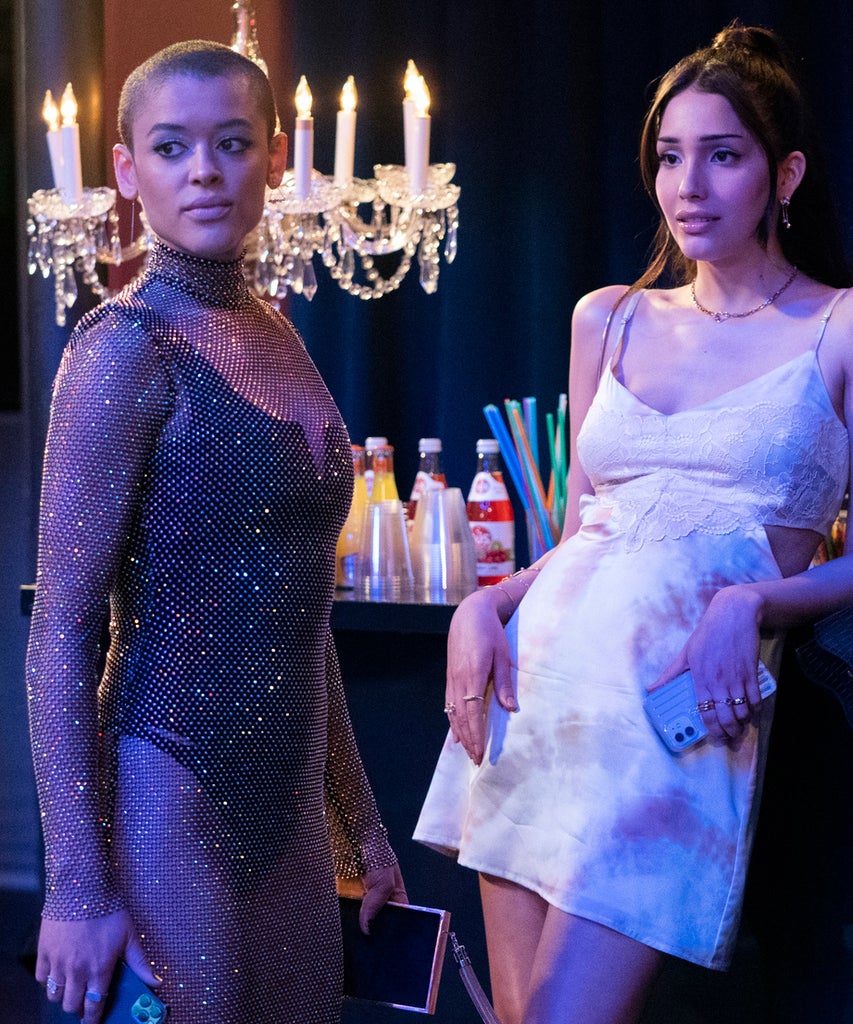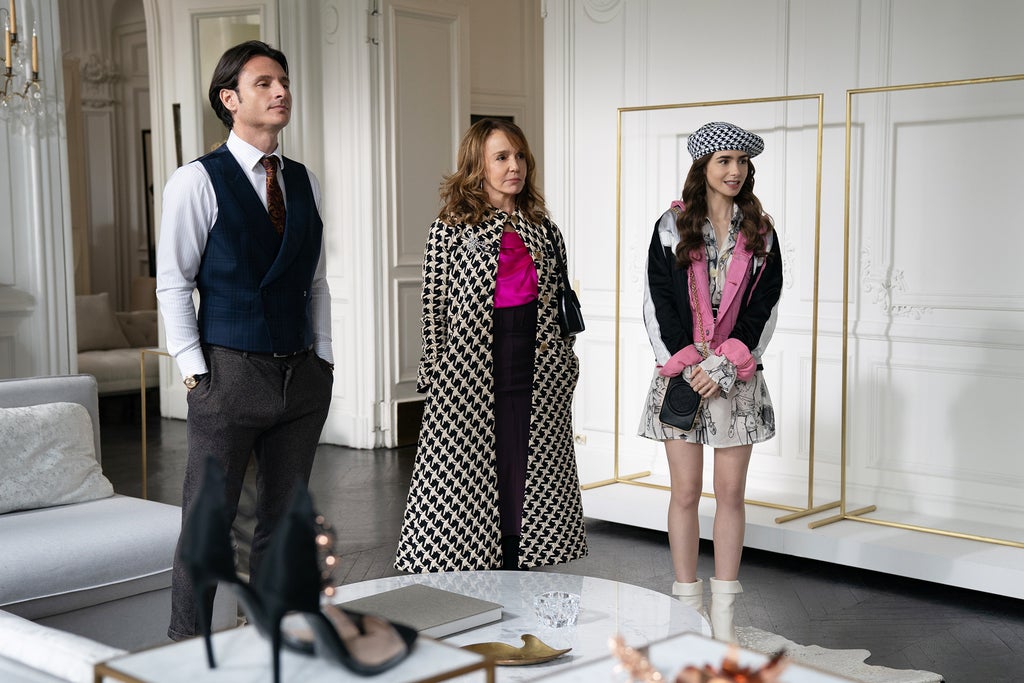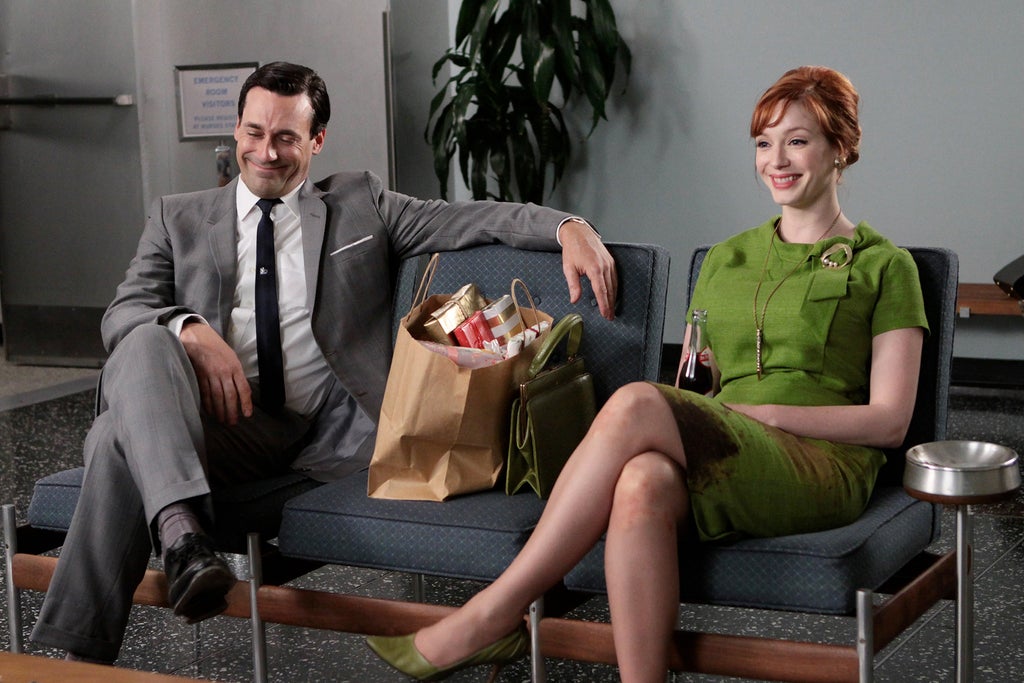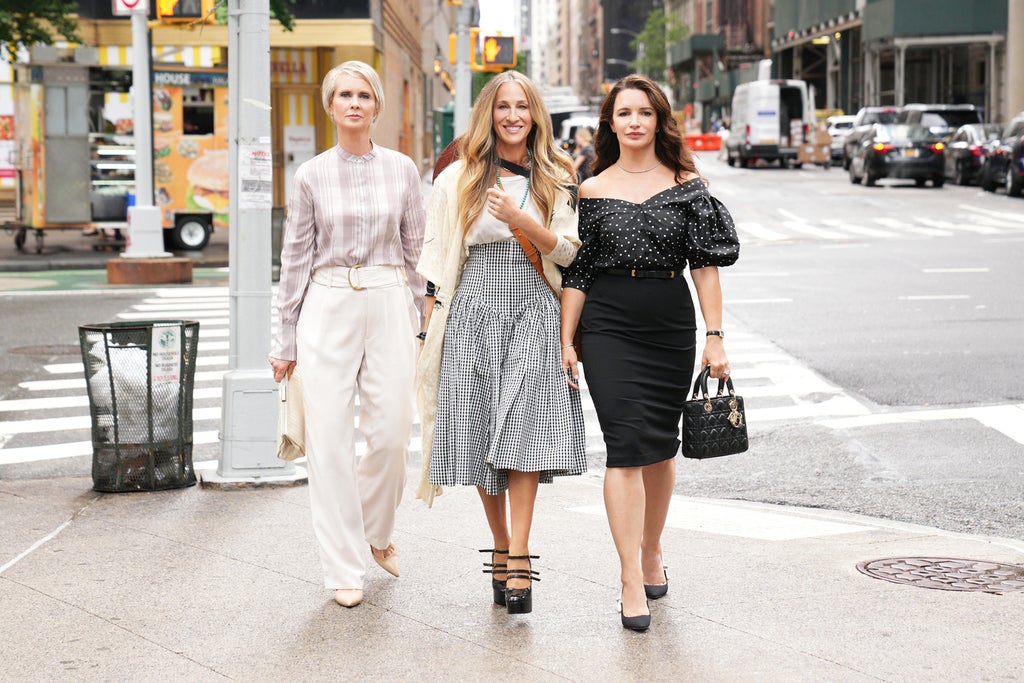
It’s been 73 years since the first Oscar for Best Costume Design was awarded. Back then, the category was divided into two awards — for black-and-white and color films — with Roger K. Furse winning the former for Hamlet and Dorothy Jenkins and Barbara Karinska taking home the gold statue for Joan of Arc. While their names went down in history, these costume designers did not enjoy the celebrity of today’s pros like Sex and the City’s Patricia Field and Gossip Girl’s Eric Daman.
“People didn’t know who did the costumes [for films and TV],” says Salvador Perez, president of the Costume Designers Guild, an organization founded in 1953 to protect costume designers. “They’d know what the costume was and who wore it.” Over time, with the help of more televised award shows like the Golden Globes and the Emmys, as well as social media, this has changed.
In particular, over the last 18 months — in large part due to the pandemic putting a pause on celebrity outings and runway shows — audiences have turned to their favorite on-screen characters for fashion inspiration. Take, for example, Netflix’s Emily in Paris. Following the premiere of Season 1 of the Lily Collins-starring series, brands like Ganni, Marc Jacobs, and Kate Spade, as well as items like bucket hats and berets, saw a boost in sales thanks to Field’s costume work. Other shows like this year’s Gossip Girl and the forthcoming Sex and the City reboot And Just Like That… have prompted a similar reaction, not only resurrecting trends but also inspiring fan Instagram accounts dedicated to ID-ing the items worn on set before the shows even air.

Yet, as costume designers’ work is celebrated in public, they often don’t receive the acknowledgment they deserve behind the scenes.
In an industry plagued by pay inequity and gender bias, it’s no surprise that costume designers are victims of the same issues. “The majority of costume designers are women, and they are ignored,” says Perez, who’s worked as a costume designer on shows like The Mindy Project. “[The industry] thinking is, ‘Well, it’s just shopping, my wife can do that.’” As a man working in a role dominated by women — the Costume Designers Guild is composed of nearly 90% women — Perez says he’s been previously paid more than his female counterparts: “It’s proof that it’s a gender thing.”
Costume designer Janie Bryant, who worked on AMC’s Mad Men and HBO’s Deadwood, says that within productions, costume designers are not only getting smaller checks but are also recognized less than directors, producers, cinematographers, and production designers, which are traditionally “men’s roles.”
According to the Costume Designers Guild, costume designers make a minimum of $2,952.11 for TV production and $3,139.86 for film work. Meanwhile, the weekly rate in the Art Directors Guild is $3,754.47 for both TV and film, according to Variety. “Part of our big mission right now is pay equity,” says Perez. “Those roles get paid more than we do, why? We’re all department heads.” Bryant agrees that costume design should be held in the same regard because “what the audience sees on the screen is the actor, and they see the actor in costume.”

And audiences are taking notice. Perez says that social media has helped movie and TV fans understand how crucial the role of costume design is. Bryant first started noticing a shift in 2007, when Vera Wang showed a collection inspired by Deadwood’s Victorian-era costumes. “That was the first kind of recognition I got outside of the film business,” she says. Bryant recalls a similar phenomenon occurred when designers like Prada started releasing collections inspired by the 1960s at the time Mad Men was on air (2007-2015). “I’m very thankful for that and for all the bloggers and Instagrammers who took the time to celebrate my work,” she says.
But while platforms like Instagram have helped the creators get more recognition, it has also led to a proliferation of fan pages showcasing the looks featured — something that costume designers are often prohibited from doing, according to Perez. So while accounts like @madmenstyles and @everyoutfitonsatc are amassing thousands of followers, many costume designers are contractually obligated to keep their name off their work or prohibited from posting behind-the-scenes photos from production. “When we sign a contract, it’s often forbidden for us to post any images on Instagram,” says Perez. “So productions are letting fans profit off the work we are doing.” Although accounts like @justlikethatcloset often credit those responsible for the looks — in the case of And Just Like That…, Molly Rogers and Danny Santiago — Perez says costume designers “could literally be fired for doing what the fans do.”
Then there is the issue of not being credited or consulted entirely. Last year, the Costume Designers Guild launched the #CreditCostumeDesigners campaign to urge studios to credit and compensate designers whenever their work ends up inspiring merch and apparel collaborations. In June, the hashtag took off when Disney released a Cruella-inspired collection with fashion brand Rag & Bone. According to Variety, the film’s costume designer Jenny Beavan had no knowledge of the line prior to its release. “I just was sort of horrified,” Beavan told the publication. This is hardly the first time that a costume designer hasn’t been credited, consulted, or paid for merchandising and apparel deals based on their work.
“Movie studios make thousands of dollars from costumes we design, and we’re not compensated for that,” says Perez. “We’d be happy even if they just credit us, honestly. ”
While there are some instances where the creators have been included — see: the Banana Republic Mad Men-inspired collection created in collaboration with Bryant in 2011 and the Birds of Prey costume designer Erin Benach’s line of jewelry inspired by the film — many others continue to be left behind by contracts and outshined by fan Instagram accounts.

In response, Rogers and Santiago created their own account dedicated to the Sex and the City reboot, which Perez says was championed by actress and executive producer Sarah Jessica Parker. Rather than ID looks though, @andjustlikethatcostumes chronicles behind-the-scenes moments between the cast and designers before they hit Getty Images, offering hints as to how the costumes play a role in the storyline. Similarly, Bryant has taken charge of her own work. Although accounts like @madmenstyles document and analyze her work on Mad Men, Bryant uses her own Instagram account, @costumedesignerjaniebryant, to give fans deep dives into her past work on shows like Why Women Kill, Deadwood, and The Last Tycoon, amassing over 70,000 followers.
“I don’t tell my members to just use social media,” says Perez. “But to use it so they can empower themselves and their work. ” As costume designers’ profiles are elevated with the help of social media and fashion enthusiasts, the question remains if they’ll ever be able to reap the rewards of their seams. Until they do, fans will continue double-tapping every post.
Like what you see? How about some more R29 goodness, right here?
How Social Media Inspired Gossip Girl's Fashion

No comments:
Post a Comment